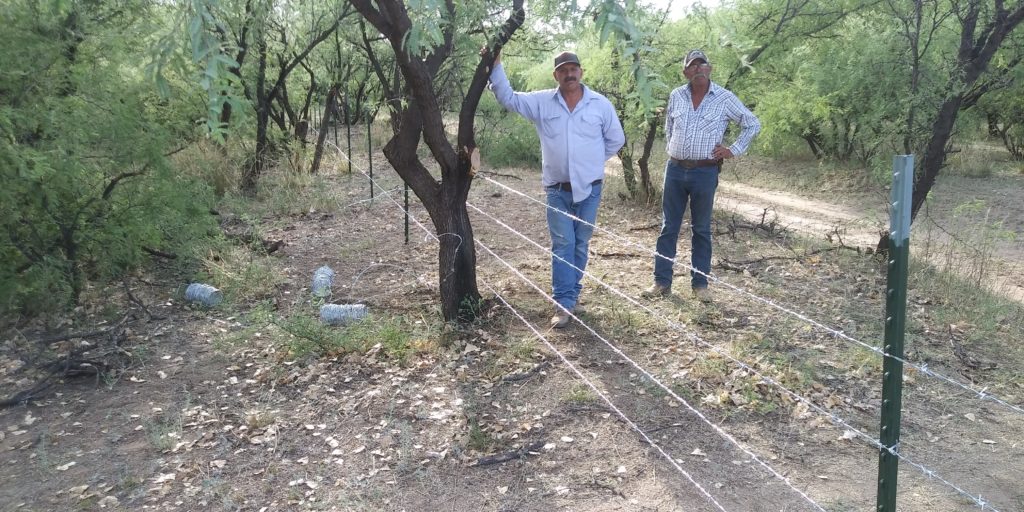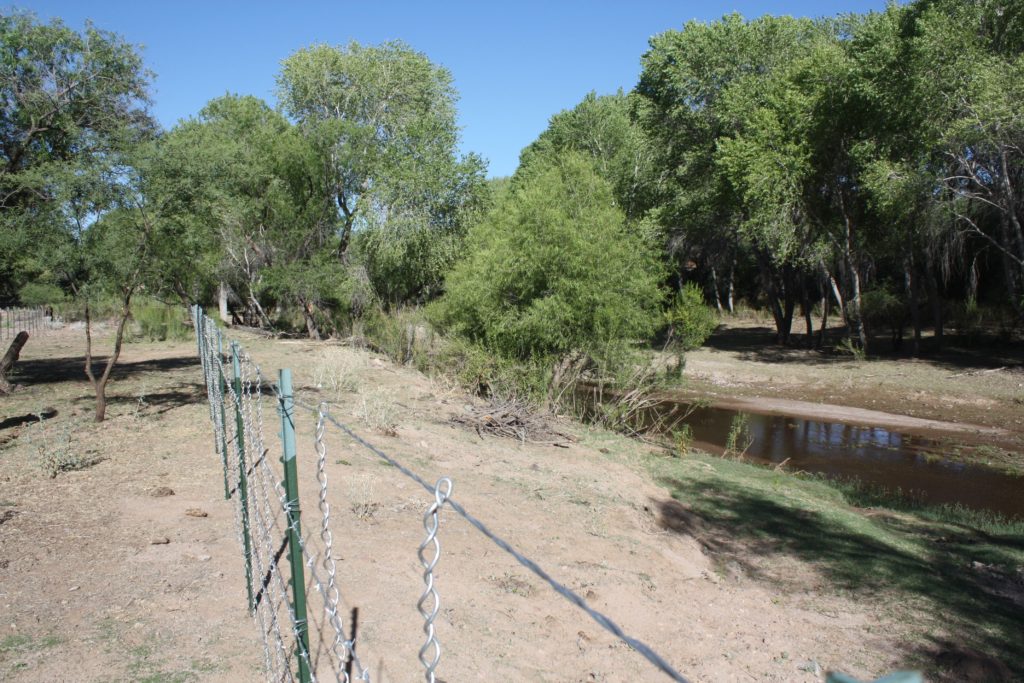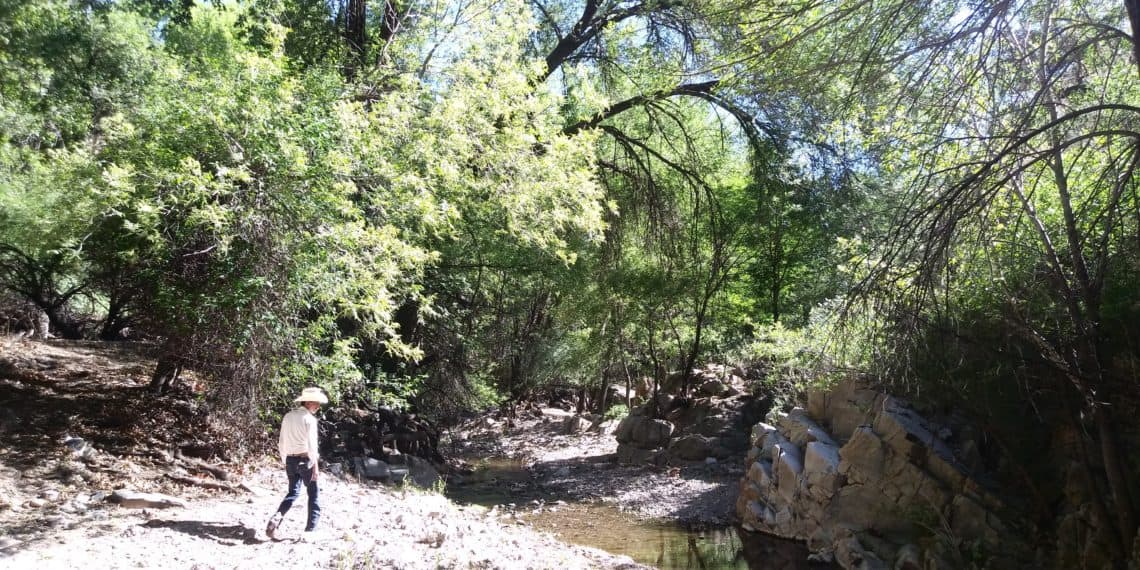By Esquer Robles, Jesus Antonio¹; Aaron Flesch², Trevor Hare¹, David Seibert¹, Kurt Vaughn³
¹Borderlands Restoration, ²University of Arizona, School of Natural Resources and the Environment, ³Borderlands Restoration Network
The Madrean Sky Islands region of northwest Mexico provides the northernmost wintering habitats, a diverse set of breeding habitats, critical stopover areas, and migratory corridors for >100 species of Neotropical migratory birds (NMB) including the Yellow-billed Cuckoo, Bell’s Vireo, Warbling Vireo, Yellow Warbler, Common Yellowthroat and Wilson’s Warbler. Conservation efforts focusing on these species and their habitats are often stymied by major scientific, social, economic, and logistical challenges since NMB require wintering, stop-over, and breeding habitats that are separated by thousands of kilometers and often span national, jurisdictional, and other physical boundaries.

Modern unsustainable land use practices, especially overgrazing, can negatively affect both the quality and extent of habitats important to NMB. Moreover, because the vast majority of lands that are essential to NMB are privately owned, especially in Mexico, strategies that improve conservation efforts on private lands are needed. Unfortunately, the people responsible for the management of these critical areas rarely understand their ecological value nor do they have the resources to sustainably manage them. To address those challenges and attempt to realize NMB conservation at landscape scales, approaches that integrate protection, management, restoration, education, and monitoring are needed.
Starting in 2012, The Borderlands Restoration Network began a multifaceted effort to integrate existing education, outreach, and research programs with targeted habitat restoration of degraded riparian areas with the potential to support cottonwood-willow forests, which have been documented to be critical habitat for NMB. With the financial support from the United States Fish and Wildlife Service (USFWS) via the Neotropical Migratory Bird Conservation Act (NMBCA), we collaborated with local landowners, citizens, and volunteers to construct cattle exclusion fencing and erosion control along >25 km of riparian areas, which protected 569 ha in Northern Sonora, Mexico. Complementarily to this effort, we restored over 600 ha of riparian habitat in the adjacent Southeastern Arizona borderlands. In order to monitor the effectiveness of the restoration treatments and guide future efforts, we gathered baseline data on NMB and vegetation in restoration treatments and nearby control areas.

With some additional support from the USFWS we are continuing this work while actively developing new relationships with landowners, ejido members, and academic institutions to foster cooperative management and restoration projects on private lands. This renewed effort includes the continued maintenance of existing exclosures, the enhancement of existing restoration infrastructure and the extension of our efforts with an additional 16 km of riparian areas in the same border regions of Northern Sonora and Southern Arizona. In this phase we now have restoration agreements with 10 landowners to restore 11 sites: one on the private ranch El Aribabi; one on the ejido Santa Cruz; four in the San Lázaro community (Ejido Miguel Hidalgo) and five in the Milpillas community (ejido Miguel Hidalgo). While we continue to monitor the efficacy of restoration treatments on NMB populations and the recovering riparian vegetation we are working with local conservation educators to expanding our outreach activities. We are currently developing educational strategies to teach local students, community members and landowners about the region’s unique biodiversity through trainings, workshops and presentations, while concurrently offering field classes, internships, and job training for university students studying biology, land management, and ecotourism, and by developing and disseminating web-based and print resources in Spanish.

Our long-term goals with regard to this project are to 1) improve the quality and extent of riparian vegetation and habitats for locally breeding and migratory populations of NMB and other wildlife in the Madrean Sky Islands region, 2) increase transboundary habitat connectivity for NMB and other wildlife by working on both sides of the international border, 3) increase the knowledge and capacity of local human populations in the region to effectively manage and restore habitat for NMB on private lands, 4) monitor the effects of restoration and management efforts in a manner than guides future efforts, and 5) reach those goals by fostering relationships based on trust and credibility with local human communities.
We hope this project will enhance prospects for NMB conservation in North America by improving the capacity of local ranchers to better manage their grazing lands, while restoring important riparian habitats for migratory birds in the border region and educating and engaging rural communities in Mexico about the ecological values of their local watersheds.

